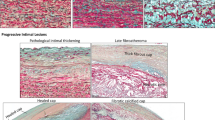Abstract
Bicuspid aortic valve (BAV) is a common congenital heart disease. Our study was to analyze clinical features of BAV and evaluate whether aortic valve calcium score (AVCS) was a reliable marker for aortic stenosis (AS) in patients with BAV. 101 patients with BAV who both underwent echocardiology and cardiac computed tomography (CT) scan in our institution were included. Basic clinical data, haemodynamic feature, aortic valve and coronary calcium score were collected and compared among patients with different valve function and different degree of AS. Risk factors related to severe AS were evaluated by logistic regression, and a receiver operative characteristic curve was used to determine the cutoff calcium score greater than which the diagnosis of severe AS was optimized. Patients with aortic regurgitation (AR) were younger and demonstrated larger aortic annulus and sinus compared with patients with other valve dysfunction. Aortic valve calcium score was higher in patients with AS than with AR. For patients with different degree of AS, there were statistical significances in the value of age, aortic valve calcium score and coronary calcium score. AVCS was positively related to severe AS with an odd ratio of 1.286 (95 % CI 1.099–1.504) by every 300 points increase. AVCS was also a strong predictor for severe AS with area under the curve 0.855 with a cutoff value of 897 (sensitivity 86.7 %, specificity 72.2 %). Conclusively, aortic calcium score calculated by quantitative CT is a reliable marker in evaluating severity of AS.



Similar content being viewed by others
References
Ward C (2000) Clinical significance of the bicuspid aortic valve. Heart 83(1):81–85
Siu SC, Silversides CK (2010) Bicuspid aortic valve disease. J Am Coll Cardiol 55(25):2789–2800
Hope MD, Urbania TH, Yu JP, Chitsaz S, Tseng E (2012) Incidental aortic valve calcification on CT scans: significance for bicuspid and tricuspid valve disease. Acad Radiol 19(5):542–547
Pomerance A (1972) Pathogenesis of aortic stenosis and its relation to age. Br Heart J 34(6):569–574
Cueff C, Serfaty JM, Cimadevilla C et al (2011) Measurement of aortic valve calcification using multislice computed tomography: correlation with haemodynamic severity of aortic stenosis and clinical implication for patients with low ejection fraction. Heart 97(9):721–726
Koos R, Mahnken AH, Sinha AM, Wildberger JE, Hoffmann R, Kuhl HP (2004) Aortic valve calcification as a marker for aortic stenosis severity: assessment on 16-MDCT. AJR Am J Roentgenol 183(6):1813–1818
Clavel MA, Pibarot P, Messika-Zeitoun D et al (2014) Impact of aortic valve calcification, as measured by MDCT, on survival in patients with aortic stenosis: results of an international registry study. J Am Coll Cardiol 64(12):1202–1213
Shin HJ, Shin JK, Chee HK, Kim JS, Ko SM (2015) Characteristics of aortic valve dysfunction and ascending aorta dimensions according to bicuspid aortic valve morphology. Eur Radiol 25(7):2103–2114
Nishimura RA, Otto CM, Bonow RO et al (2014) 2014 AHA/ACC guideline for the management of patients with valvular heart disease: executive summary: a report of the American College of Cardiology/American Heart Association Task Force on Practice Guidelines. J Am Coll Cardiol 63(22):2438–2488
Song JK (2015) Bicuspid aortic valve: unresolved issues and role of imaging specialists. J Cardiovasc Ultrasound 23(1):1–7
Kang JW, Song HG, Yang DH et al (2013) Association between bicuspid aortic valve phenotype and patterns of valvular dysfunction and bicuspid aortopathy: comprehensive evaluation using MDCT and echocardiography. JACC Cardiovasc Imaging 6(2):150–161
Jackson V, Petrini J, Eriksson MJ, Caidahl K, Eriksson P, Franco-Cereceda A (2014) Aortic dimensions in relation to bicuspid and tricuspid aortic valve pathology. J Heart Valve Dis 23(4):463–472
Bissell MM, Hess AT, Biasiolli L et al (2013) Aortic dilation in bicuspid aortic valve disease: flow pattern is a major contributor and differs with valve fusion type. Circ Cardiovasc Imaging 6(4):499–507
Beroukhim RS, Kruzick TL, Taylor AL, Gao D, Yetman AT (2006) Progression of aortic dilation in children with a functionally normal bicuspid aortic valve. Am J Cardiol 98(6):828–830
Koos R, Kuhl HP, Muhlenbruch G, Wildberger JE, Gunther RW, Mahnken AH (2006) Prevalence and clinical importance of aortic valve calcification detected incidentally on CT scans: comparison with echocardiography. Radiology 241(1):76–82
O’Sullivan CJ, Windecker S (2013) Implications of bicuspid aortic valves for transcatheter aortic valve implantation. Circ Cardiovasc Interv 3(6):204–206
Jilaihawi H, Wu Y, Yang Y et al (2015) Morphological characteristics of severe aortic stenosis in China: imaging corelab observations from the first Chinese transcatheter aortic valve trial. Catheter Cardiovasc Interv 85(suppl 1):752–761
Silverman MG, Harkness JR, Blankstein R et al (2014) Baseline subclinical atherosclerosis burden and distribution are associated with frequency and mode of future coronary revascularization: multi-ethnic study of atherosclerosis. JACC Cardiovasc Imaging 7(5):476–486
Natorska J, Undas A (2015) Blood coagulation and fibrinolysis in aortic valve stenosis: links with inflammation and calcification. Thromb Haemost. doi:10.1160/TH14-10-0861
Jackson V, Eriksson MJ, Caidahl K, Eriksson P, Franco-Cereceda A (2014) Ascending aortic dilatation is rarely associated with coronary artery disease regardless of aortic valve morphology. J Thorac Cardiovasc Surg 148(6):2973–2980
Acknowledgments
The study was granted by the Capital Special Project of Health Research and Development (2011-4003-01).
Author information
Authors and Affiliations
Corresponding author
Ethics declarations
Conflict of interest
None.
Ethical standards
Our study was a retrospective study, all the data were collected through electronic medical records in our institution with ethical approval and analyzed anonymously. Informed consent was not available because no change was applied to patients’ treatment.
Rights and permissions
About this article
Cite this article
Ren, X., Zhang, M., Liu, K. et al. The significance of aortic valve calcification in patients with bicuspid aortic valve disease. Int J Cardiovasc Imaging 32, 471–478 (2016). https://doi.org/10.1007/s10554-015-0783-y
Received:
Accepted:
Published:
Issue Date:
DOI: https://doi.org/10.1007/s10554-015-0783-y




